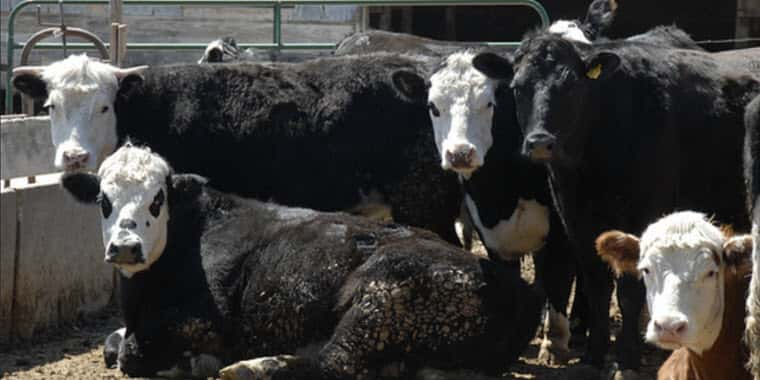Today, U.S. Secretary of Agriculture Brooke L. Rollins, Secretary of the Interior Doug Burgum, Secretary of Health and Human Services Robert F. Kennedy Jr., and Small Business Administrator Kelly Loeffler announced a suite of actions to strengthen the American beef industry, reinforcing and prioritizing the American rancher’s critical role in the national security of the United States.
Since 2017, the United States has lost over 17% of family farms, more than 100,000 operations over the last decade. The national herd is at a 75-year low while consumer demand for beef has grown 9% over the past decade. Because increasing the size of the domestic herd takes time, the U.S. Department of Agriculture (USDA) is investing now to make these markets less volatile for ranchers over the long term and more affordable for consumers.
“America’s food supply chain is a national security priority for the Trump Administration. We are committed to ensuring the American people have an affordable source of protein and that America’s ranchers have a strong economic environment where they can continue to operate for generations to come,” said Secretary Brooke Rollins. “At USDA we are protecting our beef industry and incentivizing new ranchers to take up the noble vocation of ranching. Today, USDA will immediately expedite deregulatory reforms, boost processing capacity, including getting more locally raised beef into schools, and working across the government to fix longstanding common-sense barriers for ranchers like outdated grazing restrictions.”
The focuses on three coordinated priorities:
- Protecting and improving the business of ranching
- Expanding processing, consumer transparency and market access
- Building demand alongside domestic supply
PROTECTING AND IMPROVING THE BUSINESS OF RANCHING
The plan focuses on increasing grazing access on federal land managed by the U.S. Forest Service and the Bureau of Land Management.
The plan will be launched via a Memorandum of Understanding (MOU) between USDA and DOI (anticipated announcement in November 2025), which will streamline and expand grazing on federal lands, elevate grazing as an Administration priority, and provide direct relief and support to America’s ranchers.
Expanding access to land will include assessing the viability of reopening vacant grazing allotments with a commitment to ensure no net loss of AUMs nationwide.
USDA and DOI will also look to strengthen engagement between federal agencies and grazing communities through on the ground collaboration. USFS and BLM will align regulations, modernize permitting guidance and reduce backlogs for permit renewals. The agencies will also promote innovative grazing management tools to sustain rangeland health while reducing costs for ranchers.
Predator management and Endangered Species Act reform are also keys of the plan to protect the ranching business. The agencies will develop new standards for compensating ranchers for animals lost to wolves, bears, coyotes and other species.
The plan references provisions from the Budget Reconciliation passed this summer to improve the Livestock Indemnity Program (LIP) and Livestock Forage Program (LFP) to offer higher payment rates for producers.
The Risk Management Agency has expanded the beginning farmer definition from 5 years to 10 years. USDA has also enhanced the premium subsidy for young producers to decreases risk for young producers who are investing in their herds.
EXPANDING PROCESSING, CONSUMER TRANSPARENCY, AND MARKETS FOR RANCHERS:
USDA’s first action to improve transparency targets compliance of labeling claims for meat bearing the “Product of the USA” label. Only products that have been born, raised, and slaughtered in the United States will be eligible to make U.S.-origin labeling claims, ensuring any premiums derived from those claims only benefit producers and processors utilizing American beef.
USDA will seek out emerging technologies to enhance its efforts to delivery accurate and timely market information to producers under the Livestock Mandatory Reporting program. USDA will continue to regularly monitor industry activities and conduct regulatory compliance to ensure that cattle markets remain open, transparent, and fair for all participants. USDA says it will work with the Department of Justice as necessary.
The Agricultural Marketing Service will expand its remote grading program for beef, targeting small and medium processors that supply local and regional markets. AMS will also expand its Instrument Enhanced Grading program, which leverages camera technology to improve the consistency and accuracy of the AMS grading program and reduce staffing needs, bringing costs down for meat processors.
The Ag Department plans to announce a fourth round of grant funding through the Meat and Poultry Processing Expansion Program (MPPEP) to support small processors, with a focus on promoting local supply chains. Grants would total up to $2 million per award.
Deregulation is also a priority in working with the Environmental Protection Agency. Regulatory reforms aim to provide certainty and clarity for America’s ranchers by ensuring a clear, consistent, and durable definition of “Waters for the
United States” (WOTUS) under the Clean Water Act. In addition to that action, the EPA has withdrawn a 2024 proposed rule that would have imposed costly new wastewater discharge requirements for meat and poultry processing facilities. The action would prevent $1.1 B to $7.8 B in future compliance costs, allowing more meat and poultry processing facilities to be built.
BUILD DEMAND ALONGSIDE DOMESTIC SUPPLY
By increasing domestic and international demand in tandem with the domestic beef supply, the Trump Administration hopes to less the volatility of the boom and bust cattle cycle.
The first step USDA will take is expanding access to locally raised beef for students. USDA is encouraging schools, sponsors, and institutions participating in any USDA Child Nutrition Programs (CNP) to source and serve locally grown foods, including beef, in program meals.
Together with the Department of Health and Human Services, USDA will ensure the 2025–2030 Dietary Guidelines for
Americans (DGA) reflect sound science and practical advice for the American family, including encouraging protein as the foundation for every meal.
To view the details of USDA’s plan to fortify the American beef industry, click here.
###
USDA


